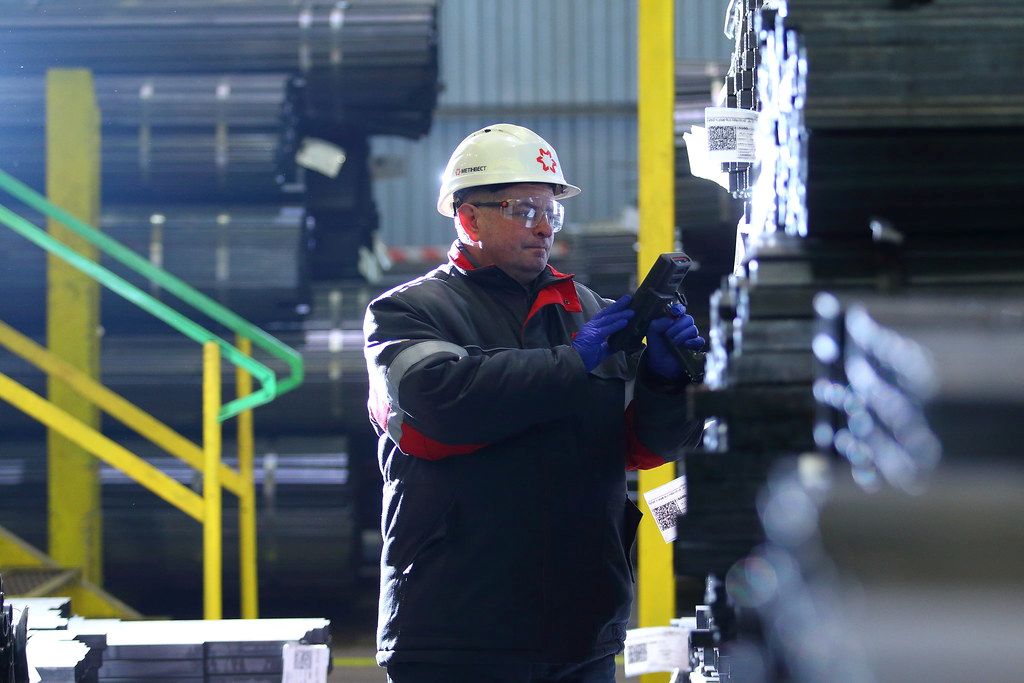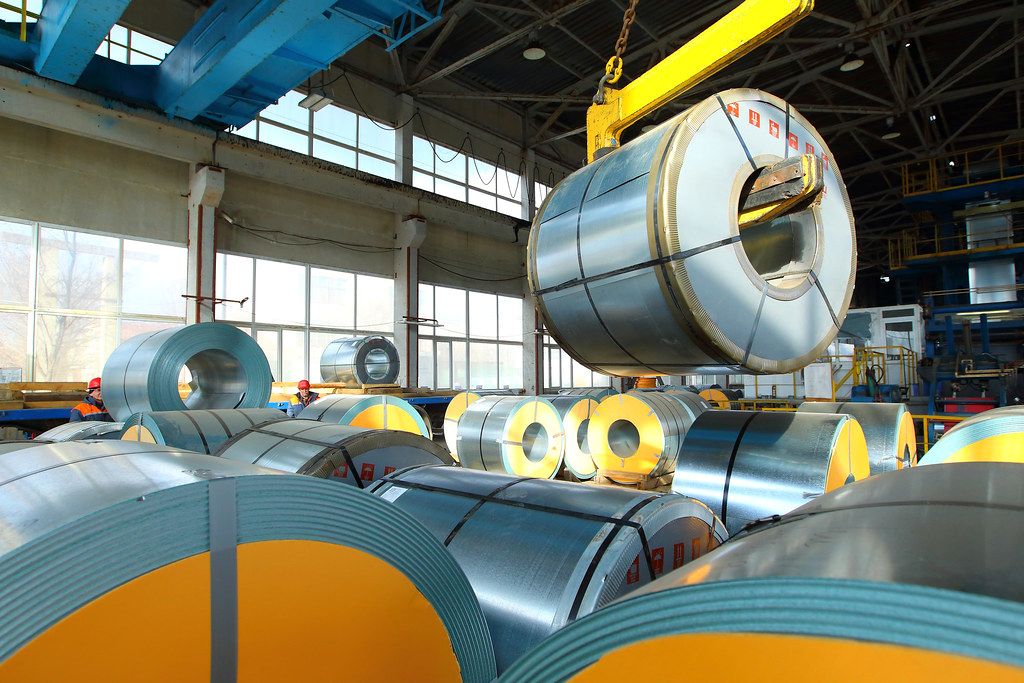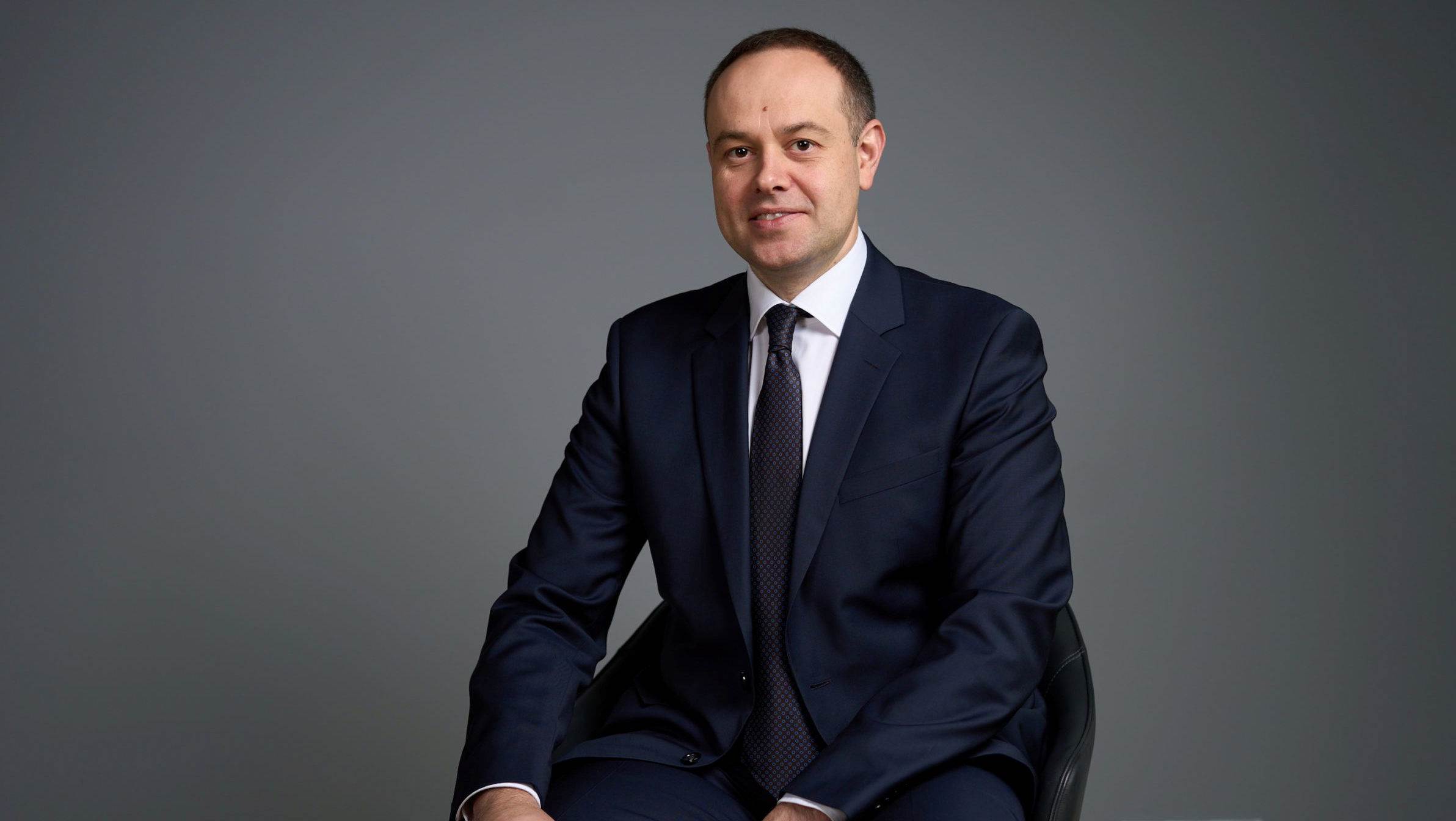The loss of the Mariupol-based plants, Azovstal and Ilyich Steel, had a significant impact on the domestic rolled steel market, halting the production of slabs, steel plates over 8 mm, I-beams, railway rails and so on. This led to a shortage of them. In response, Metinvest almost immediately began producing certain “lost” steel products at its remaining Ukrainian enterprises and started procuring imported rolled steel.
— What have been the main changes in the Ukrainian metals trading market since the start of the war?
— The metals trading market has changed since the start of full-scale hostilities in 2022. Small players who were unable to adapt to the new realities have exited the market. The sector has consolidated around the main national metals traders. A decline in demand has intensified competition, leading to lower margins.
Due to the loss of a significant product range manufactured at Ukrainian assets, our company also transformed from a distribution network into a full-fledged metals trader that needs to source imported rolled steel on the open market.
— What changes in demand for steel products have you observed in Ukraine in recent years? Which market segments are seeing the highest demand?
— Since the start of the full-scale war, demand has dropped by 57%. In 2023, from a low base, demand grew by 47%, and in 2024 by 10%. However, even with this growth, market capacity in 2024 remains 30% below the 2021 level. This is due to both the loss of territories where large consumers were located and the destruction of production facilities. Uncertainty and high risks are holding back investment activity in Ukraine.
The sectors with the highest consumption of rolled metal include construction, hardware and pipe manufacturing and metalworking, as well as the mining and metals complex itself.
— At the beginning of the war, supply chains were affected the most. Is Metinvest-SMC still experiencing logistical challenges and the need to optimise routes?
— While the situation has somewhat stabilised, unfortunately, we are still experiencing certain logistical difficulties. The war has brought long-term changes to logistical routes and forced us to rethink our usual logistical arrangements. This relates to the delivery of raw materials to production sites in Ukraine, as well as semi-finished products to Metinvest’s rolling assets in the EU, whose products are sold in Metinvest-SMC service centres.
Shelling of port infrastructure, damage to railway lines and the blocking of border crossings are forcing us to adapt and change what were well established logistical routes.
With the increase in product imports, we have also started using leased transshipment facilities near ports to optimise logistics costs for deliveries to cities where we do not yet have metal centres, but where our customers are located.
In addition to optimising current logistical routes, an important task is to open new ones by utilising a fleet that ships ore to distant markets. This will enable us to reduce not only logistical costs, but also the delivery time of imported products. Our team is testing one such route.
We understand that efficient logistics are critical to ensuring uninterrupted operations and meeting our customers’ requests. As such, our team is constantly looking for optimal routes, including by using multimodal transport, adapting to the realities of wartime and preparing for the future economic recovery.

— The war has significantly changed the regional landscape of economic activity and, consequently, sales of steel products. How has your company changed its warehousing policy since the start of the war?
— We are in the process of reorganising our network of metal centres.
At several facilities, we have set up separate warehouses for small and medium-sized business customers, which already enables us to ensure prompt shipment. We are working on developing a service for retail customers, creating an online store with the option of card payment and delivery arrangement.
We are considering opening new facilities in different formats and regions to meet the needs of our current and future customers. With the expansion of imports, additional covered space has appeared near seaports.
— What are the functions of Metinvest-SMC’s two Polish warehouses?
— The warehouses in Poland are designed to meet the needs of customers in the European market with rolled products manufactured by Metinvest Group enterprises.
— Following the loss of two Mariupol steel plants, at other enterprises, are you managing to establish the production of steel products that have become scarce?
— After the full-scale invasion, several of Metinvest’s Ukrainian assets were shut down or destroyed. The loss of Azovstal and Ilyich Steel in Mariupol caused the greatest damage to the range of finished rolled metal and commercial semi-finished products. The production of slabs, steel plates thicker than 8 mm, I-beams, mainline rails and other products has completely stopped in Ukraine.
Since 2022, work has been under way at the remaining Ukrainian assets to “redevelop” certain product sizes and grades that were lost with the Mariupol sites. At Zaporizhstal, this includes steel slabs to supply Metinvest’s European plants, hot-rolled and cold-rolled coils and sheets; and at Kamet Steel, this includes structural profiles (channels, angles) and grinding balls for coarse milling.
Metinvest-SMC is compensating for the shortage of steel products, the production of which was technically impossible from the remaining enterprises in Ukraine, through supplies from the Group’s European plants and imports of rolled steel from third parties. Since mid-2022, Metinvest has established product supplies to Ukraine from its Italian assets, Trametal and Ferriera Valsider. The supplier geography was further expanded to cover Romania, Slovakia, Bulgaria, Poland, Turkey and China. We remain a leading supplier of steel plates, including from the Group’s European assets.
We have also begun various formats of cooperation with other Ukrainian producers. For example, in collaboration with Dnipro Metallurgical Plant (DCH), we established the supply of heavy structural sections for construction and machine-building to the domestic market under a tolling scheme. Cooperation with domestic pipe manufacturing plants such as Kominmet, Trubostal and so on, has enabled us to cover the shortage of electric-welded pipes and profiles.
— How does the company select products for import?
— In 2025, we forecast our own imports at 200,000 tonnes of rolled steel.
The main product in our import portfolio is plate, which was previously produced at Azovstal and Ilyich Steel. We also specialise in importing specific or project-based items.
We import all products that are not manufactured at Metinvest’s Ukrainian enterprises, or if there are customer requirements for a specific manufacturer or project. These include hot-rolled flat, rail products, as well as beams, large angles and cold-rolled steel.
We continue to work on expanding our range of imported products, both in the commercial segment and in project sales, focusing on black steel and coated rolled products.
As for specialised rolled products, such as rails, we continue to strengthen our cooperation with manufacturers to whom Metinvest also supplies iron ore, remaining a reliable partner to the main sectors of Ukraine’s economy.
— Does the company feel pressure from imports? Do you see a risk that Ukraine could become a net importer of certain types of steel products?
— We are seeing the greatest pressure from Turkish producers. Given the current global market situation, Turkey sees strong potential in increasing supplies to the Ukrainian market and is actively pursuing this, supported by production capacity and attractive prices. Turkey’s proximity to Ukraine, following the reopening of seaports, means optimal logistics.
Cheap raw materials for Turkish manufacturers — slabs from Russia for flat products and hot-rolled coils from China for pipes — mean low production costs and low export prices. A similar situation can be observed with slab imports to Europe: the Czech producer Vitkovice Steel has shown an interest in supplying hot-rolled plate to Ukraine made from Russian slabs.
The growth in imports is primarily with products previously manufactured at the Mariupol plants: hot-rolled plate, I-beams, large angles and rail products. At the same time, the share of domestically manufactured pre-painted rolled products is increasing, although imports still account for a significant share.
While the European market has imposed safeguard duties and import quotas on many products, Ukraine has introduced anti-dumping measures only on some. Given a redistribution of global trade flows, there is a risk that additional volumes of imports may end up on the Ukrainian market.

— What has been the trend in demand for steel products in infrastructure construction and during the reconstruction of damaged infrastructure?
— Infrastructure projects in 2023-24 provided a significant growth in demand and consumption of rolled steel. This led to increased demand for rebar and hot-rolled plates (for rebuilding destroyed bridges and dams and protecting energy facilities), as well as for pipe and hardware products (for defence fortifications).
— Do you have any estimates of how much steel will be required for the post-war reconstruction of Ukraine’s infrastructure?
The war has caused a great deal of destruction and damage across various sectors, and unfortunately, this continues to increase daily. According to the latest official data, as of the end of 2024, the direct damage to Ukraine’s economy exceeded US$170 billion. The housing sector and transport infrastructure have suffered the most, followed by the energy sector and industry.
The main damage has been to housing (more than 27,000 apartment buildings have been completely destroyed) and social infrastructure (400 educational institutions, 200 medical facilities and more). To support these, we have developed the Steel Dream concept, which includes a set of ready-made projects using steel frames for rapid reconstruction and increasing steel consumption.
In terms of transport infrastructure, more than 300 bridges have been completely destroyed, which will require large quantities of steel plate and rebar in the future. Power generation facilities — thermal power plants, combined heat and power plants and hydroelectric power plants — have also sustained significant damage.
At present, it is difficult to provide exact figures for the amount of steel required for reconstruction, and in addition, new projects in various sectors must be taken into account. However, according to our preliminary estimates, this will exceed 2 million tonnes during the first 10 years. We are doing everything possible to be able to meet this.
— What areas will Metinvest-SMC focus on in the near future?
— The main focus is on developing customer service and the product range for small and medium-sized businesses, as they are currently the backbone of the Ukrainian economy. In the warehouse infrastructure segment, the main emphasis is on increasing covered warehouse capacities, as customer requirements for product appearance are becoming more stringent, making this an important factor when choosing a supplier of rolled steel.
— What is your forecast for the development of the Ukrainian metals trading market over the next couple of years?
— For the next two years, the company is making a conservative forecast of 6-10% annual growth. If hostilities continue, demand will come from the defence industry and the construction of defensive fortifications.
If the hostilities cease and peace is restored, the focus will shift towards infrastructure restoration, and here, of course, demand growth could be much higher. Demand for steel products will be determined by the volume of investments coming into the Ukrainian economy, which will depend on confidence in the preservation of peace and security guarantees of investments.
Growing demand and economic revitalisation will contribute to a return to profitability, the recovery of regional metals traders, and investment in metals warehouse facilities and services.
